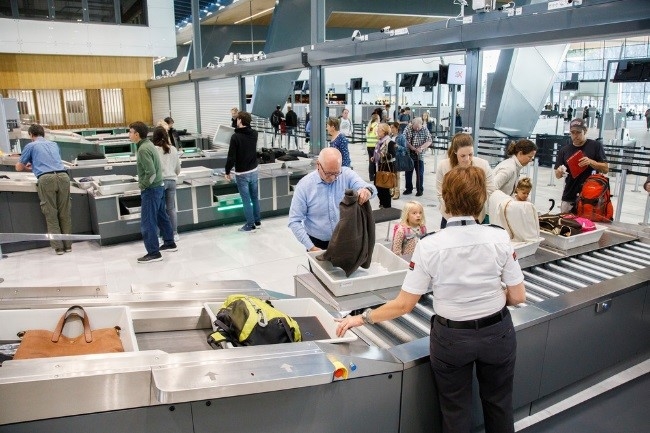Airport security has been strengthened in recent years. With the increase of the controls, the material and especially the personnel, the cost of the passage of each passenger increases too. A cost that airlines obviously pass on to their customers. They grumble about rising prices, so airports need to cut costs while maintaining or enhancing security. Automating certain tasks can help them, as I’ve seen at the Las Vegas or Auckland airports.

Choose what to optimize
The first step is of course to observe the situation and identify the bottleneck in the process. With time measurements, field observation(Gemba) and mapping, you can determine the sequence of the process.
There are two ways to optimize the airport security process.
- From the customer’s point of view (i.e. the passenger), in order to reduce the time it takes to pass through the security checkpoint, as well as the associated stress.
- From the point of view of the security officer, therefore from the point of view of the operating costs and airport fees charged to the passenger.
Both serve the passenger: the first one reduces his transit time, the second one reduces his travel cost. I’ll let you guess the approach chosen in general.
Following observations, it turns out that it is often the customer who is the bottleneck for the security controls: he must take out his computer, tablet, liquid products, remove his shoes, his belt, empty his pockets, leave his jacket, present his boarding pass. The security staff has plenty of time to visualize and analyze the contents of the bag… Software to assist in the detection of liquids or other substances has improved greatly in recent years.
An example of security automation
Vanderlande offers equipment to remove this bottleneck. I was able to test Scannojet from the Pax Optima solution. The first step, preparing the traveler’s belongings for x-ray, is multiplied. There are now three parallel stations for travelers to prepare. The bottleneck becomes the security officer who watches the bags on X-ray. That’s good, he is now active 100% of his paid time. Before, he probably spent 30 to 50% of his time waiting for luggage to enter the machine.
The new bins are also larger, which reduces by approximately 10% to 30% the volume of bins to be treated, since more bags are placed in the same bin, with the shoes next to the bag.
Finally, their system proposes to reduce anon-added value task, source of back pain: moving bins. The new system automatically returns the bins as soon as they are emptied. A camera placed at the end of the belt ensures that the bin is empty before it is returned to the preparation station. This is a good use of machine vision and a reduction of manual handling.
This allows security guards to focus on more value-added tasks: guiding and controlling travelers and their luggage.
